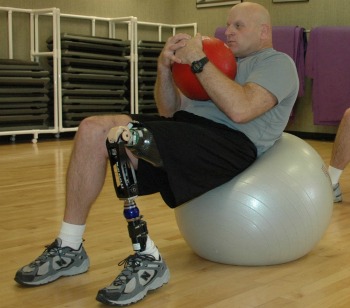 JODI MATHY
JODI MATHY
HNI Senior Claims Consultant
Even with the best safety programs in place, accidents still can happen. When an injury occurs, several parties can be involved: the injured worker, their supervisor, medical personnel, human resources, and more. While all these people may be working to help the injured employee, they may not be very clear on how to work together unless they have a coach. Having one person take the lead to coordinate the organization's response is critical to controlling work comp costs.
Who Should Take the Lead on Injury Management
Some organizations are large enough to warrant a dedicated injury management coordinator position. In small and mid-sized organizations, injury management becomes part of someone's job responsibilities. Generally, the injury management function falls under the human resources or safety department.
Elements of Effective Injury Management
Whoever is tasked with injury management responsibilities, this person should lead the charge to represent the best interests of the employer and to make sure injured employees understand their path back to work, even if it’s on modified duty. Having someone manage this process is one of the most important things you can do to manage costs associated with work injuries.
Claims advocacy is another part of the injury management coordinator role. The coordinator is responsible for creating and maintaining official case records and corresponding with insurance carriers — especially the claims adjuster. This oversight helps an organization manage work injuries more efficiently.
Other responsibilities of an effective injury management coordinator can include:
- Educating employees (including supervisors and managers) about the cost of workplace injuries and the physical, emotional, and financial benefits of early return to work.
- Maintaining relationships with local doctors and clinics that understand early return to work and use evidence-based protocols to benchmark their treatment outcomes and utilization.
- Developing policies and procedures to support the injury management program.
- Creating and facilitating training for supervisors and workers on processes and controlling workers compensation costs.
Why Designating an Injury Management Coordinator is Critical
Having one person managing the response to an injury ensures the employee has someone to turn to with questions and issues, which can have a major impact on the employee's attitude and perception of the situation. This helps prevent the work comp claim from becoming tense or evolving into a litigious situation.
Ensuring a quick return to work also goes a long way in avoiding expenses tied to lost time. For injured workers, returning to work is a great form of therapy. It prevents them from becoming isolated and developing a self-image that is defined by their injury.
In your organization, who fills the role of injury management coordinator? How do you communicate work injury protocol? Please sounds off in comments!
Related Posts:
How Employers Can Break Through Work Comp Claim Dysfunction
Work Comp: When Are Commuting Employees Covered?
3 Reasons You Need Work Comp Even If You Provide Health Insurance
.png?width=69&height=53&name=Acrisure%20Logo%20(White%20Horizontal).png)

 JODI MATHY
JODI MATHY![[ GET THE WHITE PAPER ] 10 Proven Strategies to Control Work Comp Costs](https://no-cache.hubspot.com/cta/default/38664/2ba0144d-9544-41b3-95de-064c53136f17.png)
